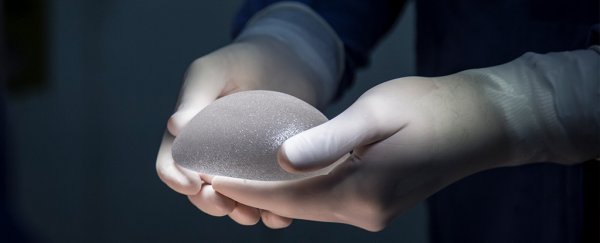It's been eight years since the US Food and Drug Administration (FDA) first reported a suspicious link between breast implants and a rare cancer of the immune system.
Evidence of that connection is now stronger than ever, with 457 confirmed cases of anaplastic large cell lymphoma (ALCL) reported in women who have received implants in recent years.
The FDA has issued an updated statement based on a recent review of medical device reports, advising patients and medical care providers to remain aware of the potential risks involved with breast implant surgery.
"After a thorough data analysis, we are reporting that, as of September 2018, the agency has received a total of 660 total medical device reports (MDRs) regarding breast implant-associated anaplastic large cell lymphoma (BIA-ALCL) cases in the US since 2010," the FDA reports.
"Of the 660 MDRs, our in-depth analysis suggests that there are 457 unique cases of BIA-ALCL, including 9 patient deaths."
The exact nature of the link between implants and ALCL, or even if the relationship is strictly causative, is yet to be convincingly established.
Implants are typically inserted below existing breast tissue or even beneath the underlying muscles, causing the body to form a protective capsule of scar tissue. In most cases, signs of the condition were found close to the implant beneath this capsule.
While research continues to dig further for answers, health organisations are calling for caution.
"Though the number of identified cases of BIA-ALCL is small compared to the estimated 1.5 million patients who receive breast implants worldwide every year, confirmed data and published information reviewed to date suggests that patients with breast implants have an increased risk of BIA-ALCL," the FDA states.
To put the figures into perspective, roughly 400,000 breast augmentation procedures are carried out each year in the US, a number that's grown by about a third since the turn of the century.
That suggests the chances any single implant procedure will give rise to this deadly form of lymphoma could be relatively small.
Not all implants seem to carry the same risks, either. Some of the research conducted over the past decade suggests some devices are overrepresented, with odds of developing ALCL from textured implants of between 1 in 3,817 and 1 in 30,000.
Different countries also report conflicting figures. The Royal Australian and New Zealand College of Radiologists suggests the incidence for all types of implant is far greater, in the vicinity of just 1 in 1,000 to 10,000.
Odds aside, the overall possibility is far less speculative than it was when researchers first identified an association for both saline and silicone implants more than 20 years ago.
ALCL is a cancer of the immune system. Technically there are several varieties – some aggressively systemic, others localised – but all are caused by aberrant white blood cells.
Among adults, cases of ALCL form just three percent of all non-Hodgkin's lymphomas, making it a relatively uncommon illness affecting barely a few hundred women each year.
Still, depending on the sub-type, prognosis can be good, with up to 95 percent survival rate after five years.
Early diagnosis can make all the difference in many cases, so the FDA is calling for vigilance over signs of swelling, lumps, or unexpected levels of pain around implants.
"We encourage patients to review our website and read specific device labelling, including patient labelling information, for any product they may consider implanting," the FDA advises.
"Choosing to obtain a breast implant is a very personal decision that patients and their providers should make based on individual needs and with the most complete information about products."
